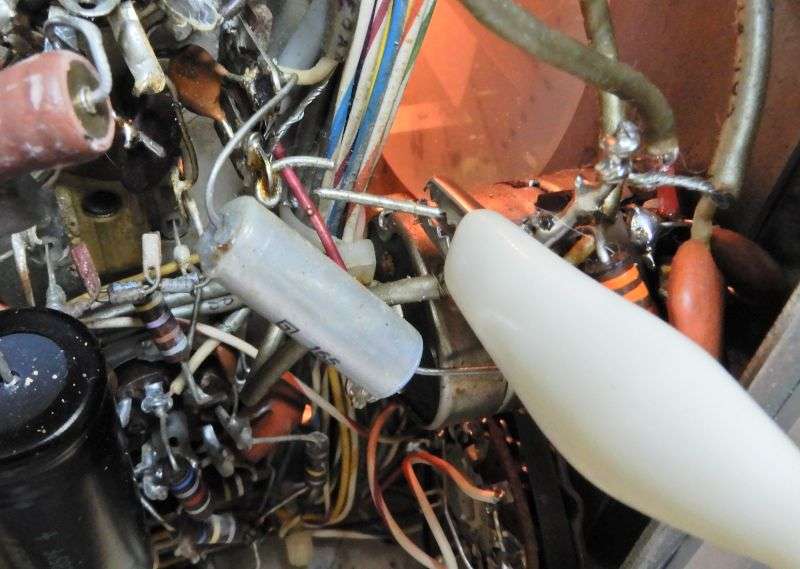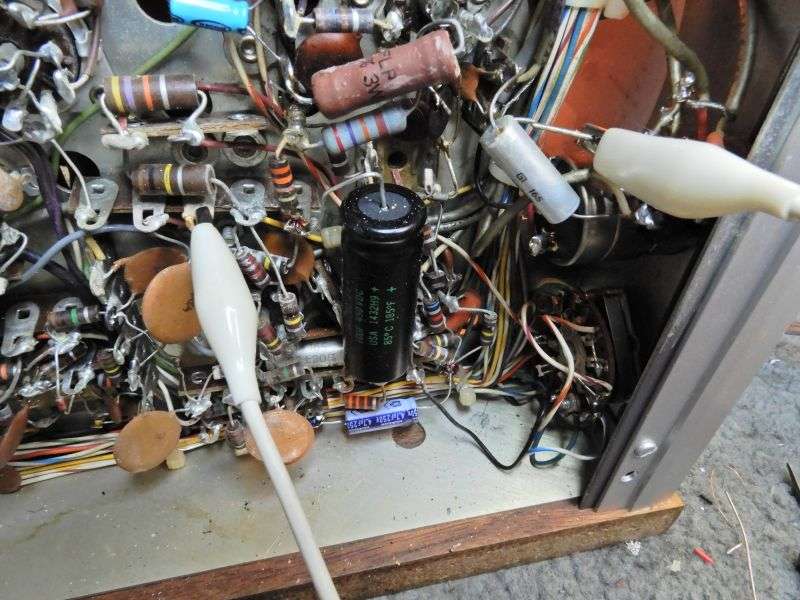You would think that after 44 years I would have learned all the tricks to fix design quirks in a radio like the original "VOX" Tram D201.
Not quite.
Even after all 20 electrolytic capacitors have been replaced there is an annoying 120-Hz "hum" in the receiver speaker, even with the volume control turned all the way down. Now, most users of this radio don't turn the volume control to zero, so I have largely ignored it all these years. With the volume turned up, and the channel noise it's not that noticeable.
But now I need to sell this radio, and that hum annoyed me. Seemed a little louder than normal for this model, to boot.
After a bit of head-scratching, I found that the chassis-ground connection on the volume/tone control was the culprit.

I cut the fat bare wire between the control and a chassis ground lug and ran a gator lead to a ground lug alongside the 12AX7 volume-control preamp/squelch tube V402.

BINGO! There is still a bit of 60-Hz 'buzz' sound if you put your ear up to the speaker, but this was a big improvement. At a distance of a couple of feet, no more 120-Hz hum.
No need for a pic of the final version, a wire soldered to the volume-control ground at one end, and to the ground lug at the other.
Just goes to show that there's always a new trick to be learned, no matter how old a dog you are.
73
Not quite.
Even after all 20 electrolytic capacitors have been replaced there is an annoying 120-Hz "hum" in the receiver speaker, even with the volume control turned all the way down. Now, most users of this radio don't turn the volume control to zero, so I have largely ignored it all these years. With the volume turned up, and the channel noise it's not that noticeable.
But now I need to sell this radio, and that hum annoyed me. Seemed a little louder than normal for this model, to boot.
After a bit of head-scratching, I found that the chassis-ground connection on the volume/tone control was the culprit.

I cut the fat bare wire between the control and a chassis ground lug and ran a gator lead to a ground lug alongside the 12AX7 volume-control preamp/squelch tube V402.

BINGO! There is still a bit of 60-Hz 'buzz' sound if you put your ear up to the speaker, but this was a big improvement. At a distance of a couple of feet, no more 120-Hz hum.
No need for a pic of the final version, a wire soldered to the volume-control ground at one end, and to the ground lug at the other.
Just goes to show that there's always a new trick to be learned, no matter how old a dog you are.
73
Last edited:


